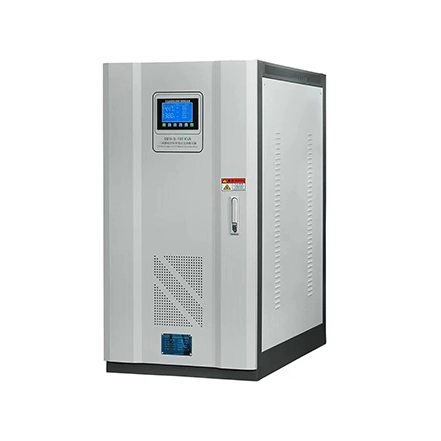In the realm of electrical systems, safety and reliability are non-negotiable. Ensuring these two aspects, especially in industrial and commercial settings where high-power equipment is prevalent, often requires robust protective devices. One such essential device is the three-phase Molded Case Circuit Breaker (MCCB). This blog will delve into what a three-phase MCCB is, its working principle, applications, and advantages.
What is a Three-Phase MCCB?
A Molded Case Circuit Breaker (MCCB) is an automatic electrical protection device that can switch off electrical circuits during overloads or short circuits. Unlike smaller circuit breakers used in residential settings, MCCBs are designed for higher current ratings and are commonly used in commercial and industrial applications.
A three-phase MCCB specifically handles three-phase electrical power, which is a method of alternating current (AC) electric power generation, transmission, and distribution. Three-phase power is used primarily in high-power applications because it delivers a more consistent and reliable flow of electricity compared to single-phase power.
Working Principle of a Three-Phase MCCB
Basic Components
Frame: Provides physical support and insulation.
Operating Mechanism: Allows manual or automatic switching.
Contacts: Enable or disable the electrical circuit.
Arc Extinguisher: Extinguishes the arc formed when the contacts open.
Trip Unit: Senses the fault conditions and triggers the operating mechanism.
Operating Mechanism
The MCCB works by interrupting the flow of electricity through its contacts. When the contacts are closed, electricity flows through the MCCB to the connected load. When the contacts are opened, the electrical circuit is interrupted, and the flow of electricity is stopped.
Protection Mechanism
Thermal Protection:
Overload Protection: The MCCB uses a bimetallic strip that bends when it heats up due to an overload. This bending action trips the operating mechanism, opening the contacts and breaking the circuit.
Magnetic Protection:
Short Circuit Protection: The MCCB uses an electromagnetic coil that generates a magnetic field when a short circuit occurs. The strong magnetic field pulls a plunger, which trips the operating mechanism, opening the contacts instantly to stop the flow of electricity.
Three-Phase Protection
In a three-phase system, the MCCB protects all three phases. If an imbalance or fault occurs in any of the three phases, the MCCB will trip to prevent damage to the electrical system and connected equipment.
Applications of Three-Phase MCCBs
Three-phase MCCBs are used in various applications due to their reliability and robustness, including:
Industrial Plants: To protect machinery and ensure continuous operation.
Commercial Buildings: For main and sub-distribution boards.
Data Centers: To safeguard servers and other critical equipment.
Renewable Energy Systems: For protecting solar panels and wind turbines.
Advantages of Three-Phase MCCBs
High Current Capacity: Can handle large currents, making them suitable for industrial applications.
Reliable Protection: Provides reliable protection against overloads and short circuits.
Adjustable Trip Settings: Allows customization of trip settings to match specific requirements.
Durability: Built to withstand harsh environments and frequent switching.
Conclusion
The three-phase Molded Case Circuit Breaker (MCCB) is an indispensable component in modern electrical systems, especially in settings requiring high power and reliability. Its ability to provide robust protection against overloads and short circuits ensures the safety and continuous operation of electrical equipment. By understanding the working principle, applications, and advantages of three-phase MCCBs, one can appreciate their critical role in industrial and commercial electrical systems.
Incorporating three-phase MCCBs into your electrical infrastructure is a strategic move towards enhancing safety, improving reliability, and ensuring efficient power distribution. Whether in an industrial plant or a commercial building, these devices are pivotal in maintaining electrical system integrity.





